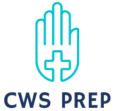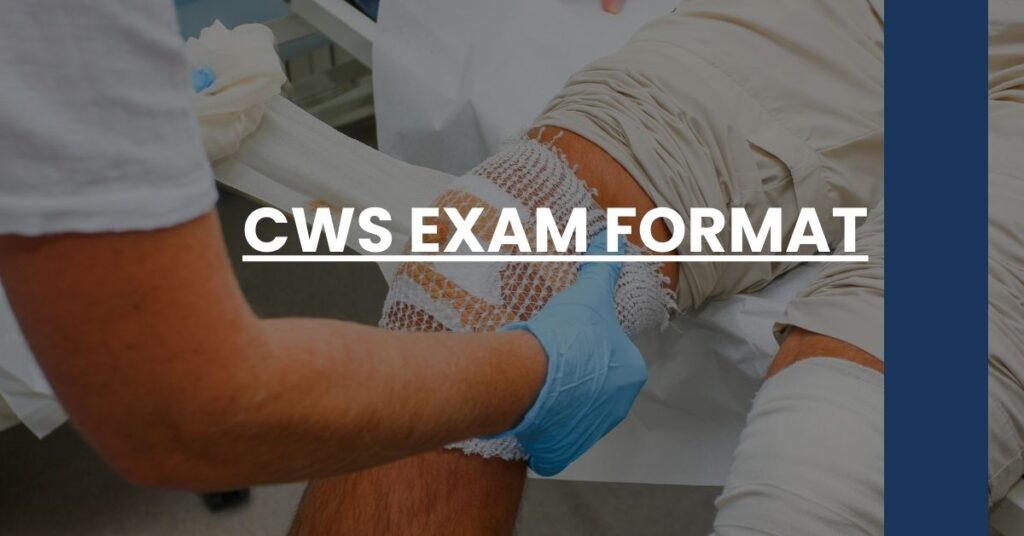The CWS Exam Format defines the structure and requirements for Certified Wireless Specialist certification—an essential evaluation for progressing within the wireless industry.
Expertly tailored to examine fundamental wireless network knowledge, the exam is a methodical mix of 60 multiple-choice questions, with a 90-minute limit to showcase expertise.
In anticipation of the query regarding the CWS Exam Format, readers will learn about:
- Key topics covered in the exam
- Strategic time management techniques
- Crucial steps for registration and preparation
Understanding this format ensures candidates walk into the examination room equipped, not just with knowledge, but with the confidence to excel.
- Introduction to the CWS Certification
- Overview of the CWS Exam Format
- Detailed Breakdown of Exam Sections
- Exam Duration and Time Management Tips
- Question Types and Scoring Criteria
- Eligibility and Prerequisites for The Exam
- Registration Process for the CWS Exam
- Preparing for the CWS Exam: Study Materials and Best Practices
- Test Day: What to Expect
- After the Exam: Next Steps and Certification
- Frequently Asked Questions (FAQs)
- Conclusion: Why Understanding the CWS Exam Format is Crucial
Introduction to the CWS Certification
If you’re exploring a career in wireless technology or looking to validate your existing expertise, the Certified Wireless Specialist (CWS) certification is a significant credential to consider. As an aspiring CWS, you’ll join an elite group of professionals who have demonstrated a concrete understanding of wireless networking basics. This includes fundamental concepts related to RF (Radio Frequency) hardware, wireless LAN (WLAN) basics, and the ability to support, sell, and make crucial decisions regarding 802.11 wireless networks. Pursuing the CWS certification not only bolsters your résumé but ensures that you are equipped with the knowledge essential for success in a rapidly evolving industry. As you delve deeper into the nuances of the CWS certification, let’s take a closer look at the CWS exam format so you can approach your preparation with confidence.
Overview of the CWS Exam Format
Understanding the format of the CWS exam is crucial in setting the right expectations and developing a study plan that maximizes your chances of success. The exam, identified as CWS-101, is structured around multiple-choice questions that assess your grasp of wireless networking principles. In total, you will be answering 60 questions, which cover a range of topics from the basics of RF signals to specifics of WLAN hardware and software. You are given 90 minutes to complete this exam, which requires both efficiency and proficiency in each subject area. Recognizing the CWS exam format allows you to allocate your study time effectively, focusing on areas where you may need additional review.
Detailed Breakdown of Exam Sections
Diving into the specifics, the CWS exam is divided into sections that collectively assess your comprehensive understanding of wireless networking. Each section emphasizes a distinct aspect of wireless technology:
- RF Fundamentals: Learn about RF behavior, propagation, and basic antenna types.
- 802.11 Technology Fundamentals: Covers the basics of how wireless technology works, including an overview of the different 802.11 standards.
- Antenna Concepts: Gain insights into antenna uses, gains, patterns, polarization, and diversity.
- Wireless LAN Hardware and Software: Understand the components that make up WLAN infrastructure and the software that supports it.
- Organizational Goals: Study how to align wireless technology with the goals and objectives of an organization.
By dissecting the exam into these targeted categories, you can strategically plan your study sessions to focus on each critical area.
Exam Duration and Time Management Tips
Managing your time during the CWS exam can be just as important as knowing the content. Ninety minutes might seem ample but time can quickly escape you if you’re not careful. Practice pacing yourself as early as possible. Start by attempting practice exams within the same 90-minute time frame. Always read questions carefully but don’t linger excessively on ones you find challenging. It’s better to move on and return to any difficult questions if time permits, rather than sacrifice the opportunity to answer questions you know later in the exam. Time management is a skill, and like any other skill, it improves with practice.
Question Types and Scoring Criteria
It’s essential to familiarize yourself with the question types that will appear on the CWS exam. While it predominantly features multiple-choice questions, understanding the nuances of each question type is critical. Some questions may be straightforward, testing your direct recall of facts. Others could be situational, asking you to apply your knowledge in a given scenario. According to test preparation resources, the passing score for the CWS exam is variable, as it uses a criterion-referenced scoring method. This means that your performance on the exam is not compared to other test-takers but rather to a preset standard. This should comfort you, knowing that you’re not in competition with your peers, but against the standards of excellence as set out by the exam.
Eligibility and Prerequisites for The Exam
Before you can sit for the CWS exam, certain eligibility criteria need to be met. These prerequisites ensure that all exam candidates have a foundational level of experience and expertise in clinical wound care. Typically, candidates must have at least three years of experience in the field, in addition to holding a full, unrestricted professional license. This could involve professions such as physicians, nurses, and other healthcare therapists. More detailed requirements can be found on the official CWS certification resources website. Familiarity with these prerequisites will prevent any unwelcome surprises when you decide to step forward and take your career to the next level by becoming a Certified Wireless Specialist.
Continue your journey to certification by learning more about the registration process, and how to best prepare yourself for success on exam day.
Registration Process for the CWS Exam
Before you can showcase your expertise in wireless networking, you’ll need to successfully navigate the registration process for the CWS exam. It’s a straightforward process designed to set you on your path to certification with ease.
- Create an Account: Start by creating a Certemy account, which will be your hub for all things CWS-related.
- Complete the Application: Fill out all necessary fields, providing proof of your qualifications and experience.
- Pay the Exam Fee: After your application has been approved, you’ll be required to pay the exam fee, a crucial step to secure your examination spot.
- Schedule Your Exam: Choose a timeslot that works best for you within the subsequent 90-day period.
Ensure that each step is completed before the associated deadlines to avoid any hiccups. By checking off each of these important milestones, you’ll be well on your way to sitting for the CWS exam.
Preparing for the CWS Exam: Study Materials and Best Practices
As you edge closer to the exam date, cultivating an effective study regime is paramount. The varied CWS exam format demands a dynamic approach to preparation, incorporating both theoretical knowledge and practical application. Draw upon a range of resources—from study guides and flashcards to dedicated courses offered by the ABWM Foundation. Incorporating practice tests into your routine can dramatically improve your readiness, letting you identify areas for improvement while becoming comfortable with the structure and pacing of the exam. The key is to curate a study plan that plays to your strengths while bolstering your weaker areas, ensuring a well-rounded grasp on all things wireless.
Test Day: What to Expect
When the exam day arrives, it pays to know exactly what to expect. Ensure that you have a valid ID for identification, and remember that personal items are not permitted in the exam room. It’s important to arrive at the testing center well-rested and early—not only to avoid any last-minute stress but also to give yourself ample time to adjust to the environment where you’ll be demonstrating your proficiency in the CWS exam format.
When you’re seated and ready to begin, you’ll find the questions are designed to challenge and quantify your understanding. Trust in the thorough preparation you’ve undertaken, engaging with each question methodically and thoroughly.
After the Exam: Next Steps and Certification
Post-exam, you’ll no doubt be eager to receive your results. The CWS exam administrators typically release exam scores within a few weeks following the test date. Once you pass, your certification is valid for three years, after which you’ll need to renew it by passing the most recent version of the CWS exam. This ensures that certified professionals remain current with the ever-evolving landscape of wireless technology. Stay abreast of recertification requirements by bookmarking the CWS certification page, and make note of the renewal procedures to maintain your certified status.
Frequently Asked Questions (FAQs)
You might still have questions about the CWS exam format or the certification process, and you’re not alone. Let’s address some common queries:
- Q: How often is the CWS exam updated?
- A: Exam content is regularly reviewed to keep pace with new developments in the wireless industry.
- Q: Where can I take practice exams?
- A: Practice exams are available through various resources, including the Mometrix Academy.
When in doubt, reach out to certification bodies or join forums where fellow candidates and certified professionals can offer insights from their own experiences.
Conclusion: Why Understanding the CWS Exam Format is Crucial
Now that you understand the CWS exam format, you can appreciate how this in-depth knowledge links directly to your success. From blending study materials to mastering exam logistics, each step taken is a stride towards not just passing an exam, but excelling in an industry defined by its rapid development and technological advancements.
Your ability to adapt the CWS exam format knowledge into practical execution not only prepares you for test day but also underpins your professional capacity. So approach your certification journey with confidence, bolstered by the comprehensive understanding you now hold on what awaits you in seeking your CWS credential.
Discover the CWS exam format essentials for successful certification preparation. Exam sections, question types, and time management tips unveiled.

